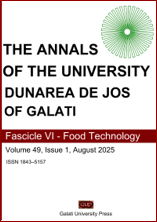Evaluating nutritional changes and heavy metal concentrations in shrimps: the effects of different culinary methods
Abstract
This study analyzed moisture, protein, carbohydrate, lipid, and metal concentrations (Fe, Zn, Cu, Li, Cr, Pb) in Penaeus monodon and Penaeus indicus harvested in Pakistan, comparing raw, pan-fried, and sushi preparations. Frying reduced moisture but increased protein content, with fried shrimp showing higher protein levels by adding gram flour coating in traditional methods than raw and sushi. The highest Fe and Li concentrations were found in fried P. monodon, while Cu was most concentrated in its raw form. In P. indicus, Cu was either very low or below detection limits, and Li was undetectable in most preparations except sushi. Cr and Pb were not detected in any preparation method of both P. monodon and P. indicus throughout the analysis, indicating their concentrations were below the detectable limits of the applied analytical technique. Overall, all heavy metal concentrations were well below the WHO permissible limits, indicating the shrimp samples are safe for human consumption. The study also highlighted higher fat and energy content in fried shrimp, while sushi had lower protein and energy levels. These findings provide insights into the nutritional impacts of different cooking methods and update knowledge on seafood quality and metal concentrations during culinary processes.


